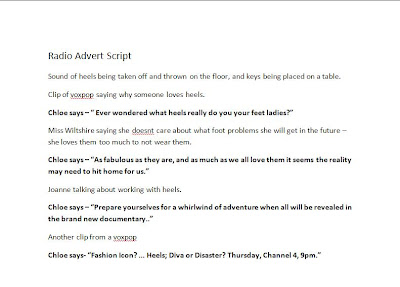More about the filming process...
Originally, we had filmed our voxpops in Liverpool One, and as our group contained 3 members, we each took turns of standing in the voxpop and asking the interviewee a question. When looking back at our filming, we decided that having 3 different interviews may confuse the audience, and so decided to refilm our voxpops without the three of us in shot.
Premiere Pro
Although I had used Premiere Pro before, I had never used it in this much detail and found it a little challenging to get used to the amount of tools there was on offer to use. We found the audio grain tool highly useful when editing our documentary, particularly on Graham Carter's interview as the sound quality was poor and very grainy. We found it interesting to put fades on some of our clips, particularly at the end of interviews, and we did this using video effects. We had a slight problem throughout the editing period as our sound files merged into one, and therefore without the razor tool, we would have been unable to edit our documentary further and reach the finished piece.
Adobe Photoshop
Windows Movie Maker

I used this package to present my evaluation in an interesting and eye catching way. Movie Maker allowed me to make short videos containing voice clips, screengrabs and video clips from my product, and explain my designs in a voice over.
Ice Radio Recording Suite
Another piece of technology I was lucky enough to use during the construction of my product was the Ice Radio Recording Suite. This piece of technology allowed me to record our voice overs, and control the sound levels so they were appropriate for our product.




















































 Most people do not have a lucky pair of shoes.
Most people do not have a lucky pair of shoes. High heels appear to be a popular sale with the women we questioned, with 6 inches being the popularist answer.
High heels appear to be a popular sale with the women we questioned, with 6 inches being the popularist answer. Majority vote was for black heels, with the girly colours purple and pink coming in at second place. Hopefully voxpops will allow us to investigate this more.
Majority vote was for black heels, with the girly colours purple and pink coming in at second place. Hopefully voxpops will allow us to investigate this more.

 5-9pm was the most popular answer, so we will schedule our documentary for this time.
5-9pm was the most popular answer, so we will schedule our documentary for this time.
 Sales assistant, shoe designer and shop manager were popular answers, so hopefully we will be able to interview people of these professions to keep our viewers entertained.
Sales assistant, shoe designer and shop manager were popular answers, so hopefully we will be able to interview people of these professions to keep our viewers entertained. Most people do not want to hear about the history of heels, with only a small percentage saying yes. This could suggest that it would be best to not include this in our documentary.
Most people do not want to hear about the history of heels, with only a small percentage saying yes. This could suggest that it would be best to not include this in our documentary.